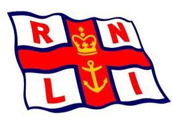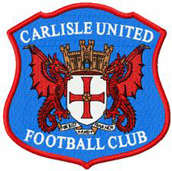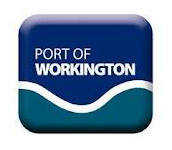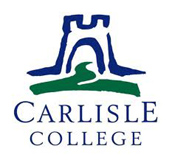- Home
- Scarrows
- Mariners
- Cumberland
- Miscellaneous
Workington
Workington is an old market town and seaport situated at the mouth of the River Derwent. Its history dates back to Roman times when during the Roman occupation Workington was the site of a Hadrianic fort which formed part of the Roman Coastal defences. After the Romans had left, Anglian invaders started to harry the coast and the town is said to derive its name from 'Wyre' a small stream that flows into the sea at Harrington and 'Weork' an Anglian Chieftain.
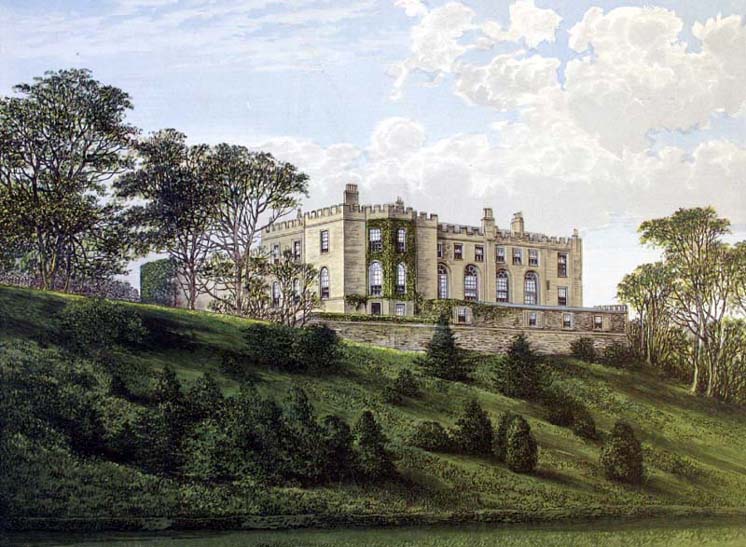
Workington Hall
The earliest surviving building in Workington is the 14th century ruins of Workington Hall the hereditary seat of the Curwen family, Lords of the Manor. In 1568 the Hall was refuge for Mary Queen of Scots during her flight from Scotland before her imprisonment and final execution.
It is now a classified ruin and the stage for Shakespearian plays and the site for the town's annual Curwen Fair.
It was in 1573 that a charter was granted for Workington to hold a market and fair. From then to the present day, market days in Workington have been on a Wednesday and Saturday. Corn and provisions were sold on a Wednesday market and on Saturdays butchers meat and other provisions were offered. The chief crops are oats, turnips and potatoes, and there are several market gardens. The soil in some places consists of fertile loam - a tract of light sandy land extends along the coast, and in other places it is inclined to moss. Two fairs were held in the course of the year for the sale of cattle on May 18th and October 18th.
 The life of the town at this time centred mainly around the Hall and it was only with the exploration of iron ore and coal that Workington began to expand. The Cumberland coalfield lay along the coast from Whitehaven to Maryport but there was no substantial working of coal in the Workington area until the middle of the 18th century when the Industrial Revolution created a demand for coal and iron ore deposits. Coal became Workington's principal export and over a long period of time the town's prosperity was dependant on mining. There were 97 vessels belonging to the port of Workington in 1770, with the majority being engaged in the coal trade with Ireland. By the early 19th century, 6 steam engines had been erected for the winding up of the coal and the pumping of water. At this time there were between 500 and 600 men women and children employed in the pits.
The life of the town at this time centred mainly around the Hall and it was only with the exploration of iron ore and coal that Workington began to expand. The Cumberland coalfield lay along the coast from Whitehaven to Maryport but there was no substantial working of coal in the Workington area until the middle of the 18th century when the Industrial Revolution created a demand for coal and iron ore deposits. Coal became Workington's principal export and over a long period of time the town's prosperity was dependant on mining. There were 97 vessels belonging to the port of Workington in 1770, with the majority being engaged in the coal trade with Ireland. By the early 19th century, 6 steam engines had been erected for the winding up of the coal and the pumping of water. At this time there were between 500 and 600 men women and children employed in the pits.
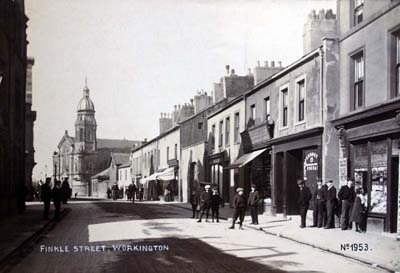 This expansion in trade and industry at the turn of the century created a demand for an increased labour force, resulting in an influx of workers from the surrounding countryside, as well as from Ireland and Wales, causing the population to reach 5716 by 1801. This influx brought many new developments and changes to the town, particularly among housing. More houses were built on the higher ground around the Hall and in the area around the parish church, in the lower part of town, near to the harbour. The fields between creating two virtually separate communities. By 1828 the number of ships in the harbour had increased to 126 ships and adjacent to the harbour, three shipyards were building ships ranging from 400 to 600 tons.
This expansion in trade and industry at the turn of the century created a demand for an increased labour force, resulting in an influx of workers from the surrounding countryside, as well as from Ireland and Wales, causing the population to reach 5716 by 1801. This influx brought many new developments and changes to the town, particularly among housing. More houses were built on the higher ground around the Hall and in the area around the parish church, in the lower part of town, near to the harbour. The fields between creating two virtually separate communities. By 1828 the number of ships in the harbour had increased to 126 ships and adjacent to the harbour, three shipyards were building ships ranging from 400 to 600 tons.
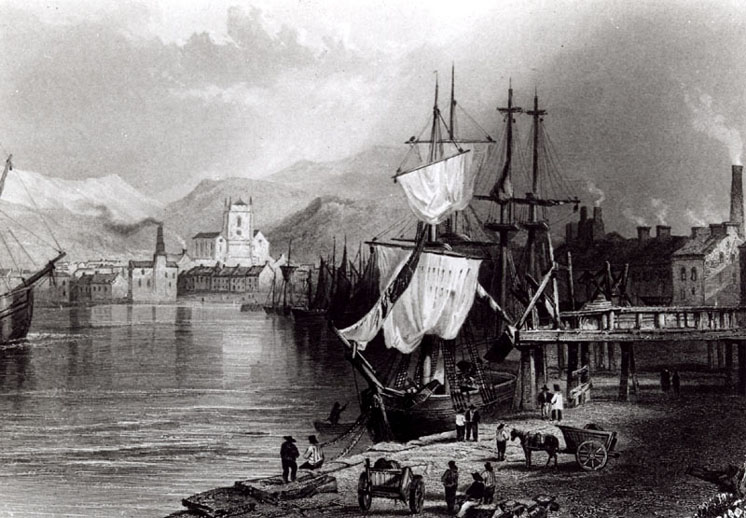
Workington Harbour 1840
In 1873 a breakwater was constructed, commencing from the end of John pier and extending 300 feet north-west. The Lonsdale Dock, opened in 1865, is at the north-west entrance of the harbour ; it is 300 feet wide by 600 feet in length, and has gates 40 feet wide, and a depth of water of from 15 feet to 18 feet. A red ball is shown by day and a red light by night on the Lonsdale tower when a vessel is coming out of the harbour, so that the navigation may not be impeded.
The harbour and dock were formerly the property of the Earl of Lonsdale, but by Act of Parliament the harbour and dock in 1906 became the property of the Workington Harbour and Dock Board.
The Customs port was extended from Lowca Beck to Canker Beck, and legal quays appointed, 16th April 1850. The Merchants' quay and the South quay are built on the opposite sides of a wide branch of the Derwent called South Gut, which, with the Mill Race, separates the town from Cloffocks.
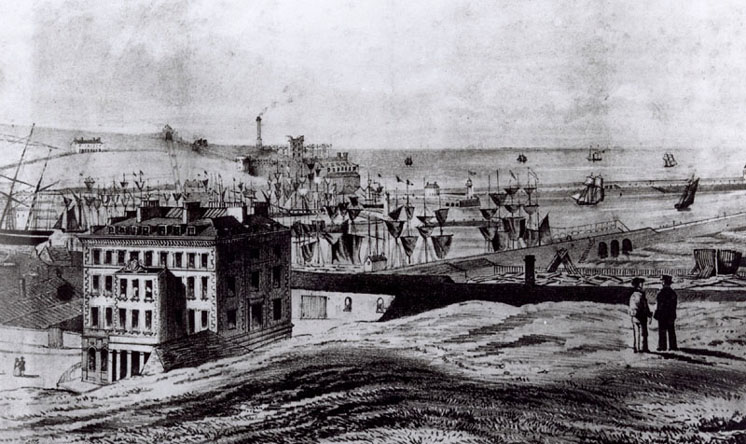
Workington Harbour 1850
Railways were built in West Cumberland primarily for the transport of coal and ore with the track connecting Whitehaven, Workington, Maryport and then on to Carlisle opening in March 18th 1847. The track from Workington to Cockermouth was completed in April 28th 1847.
Between 1875 and 1883 there was a steep decline in coal exports, one reason being that in the previous years there had been a strike by Cumberland miners. Scottish producers had taken the opportunity to capture a large proportion of the Irish market and so Workington's main export trade was seriously affected.
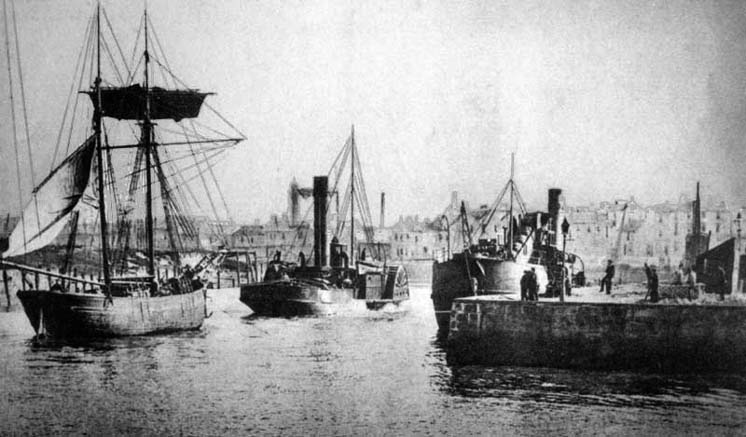
Workington Harbour circa 1900
There is no doubt that the prosperity of Workington was based mainly on the rapid growth of the iron and steel industry in the second half of the 19th century. Workington's first iron works were established at Bareport in 1763. The Oldside works were opened in 1856, the same year that Sir Henry Bessemer (1813-1898) invented a new method of converting pig iron into steel. This resulted in a substantially increased demand for Cumberland Pig Iron, so that by 1882 there were 21 blast furnaces in Workington. In 1908 iron ore was imported to the value of £21,685, and iron and steel manufactures to the value of £16,905 exported.
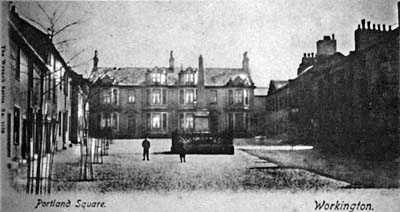 At the end of the 19th Century Workington had expanded to 2819 acres with the two clusters of buildings around the Hall and the harbour having grown larger and the space between them smaller. There does not seem to have been any overall plan for building development within the Town, it seems to have been spontaneous, but despite this houses of substance and character were built as well as shops. Coal mining was still carried out, though most of the smaller pits had been worked out. Shipbuilding was carried out by the Workington and Harrington Shipbuilding Company who employed 150 men, with a second yard owned by Charles Lamport employing 120 men.
At the end of the 19th Century Workington had expanded to 2819 acres with the two clusters of buildings around the Hall and the harbour having grown larger and the space between them smaller. There does not seem to have been any overall plan for building development within the Town, it seems to have been spontaneous, but despite this houses of substance and character were built as well as shops. Coal mining was still carried out, though most of the smaller pits had been worked out. Shipbuilding was carried out by the Workington and Harrington Shipbuilding Company who employed 150 men, with a second yard owned by Charles Lamport employing 120 men.
Imports
| Goods | Place of Origin |
|---|---|
| Iron Ore | England |
Exports
| Goods | Destination |
|---|---|
| Coal | Britain, Ireland |
| Lime | Scotland |
| Pig Iron | Worldwide |
| Steel Rails | Worldwide |
| Tinplate bars | Worldwide |
Industry
| Port Industries | Other Industries |
|---|---|
| Workington and Harrington Shipbuilding | Coal Mining |
| Charles Lamport Shipbuilders | Iron Ore Mining |
| Tin plate manufacture | Iron Works (from 1763), Steel Works (from 1856) |
| Steel Rail manufacture | |
| Brewery |
Scarrow Associations
Along with Harrington, Whitehaven, Liverpool and London; Workington was one of the (five) ports in which one or more of the Scarrow mariners was based. The majority of the sailing ships in which the Scarrow's sailed were registered here. Workington came under the jurisdiction of Whitehaven until 1852. William Scarrow lived here (Harbour Place, 18 Northside in Seaton) during the latter part of his life.
| Scarrow | Period |
|---|---|
| John Scarrow II | 1824-25 |
| Joseph Scarrow | 1847-48, 1856-61 |
| William Scarrow | 1847-48, 1853, 1856-57, 1864. Residence 1857, 1878 |

